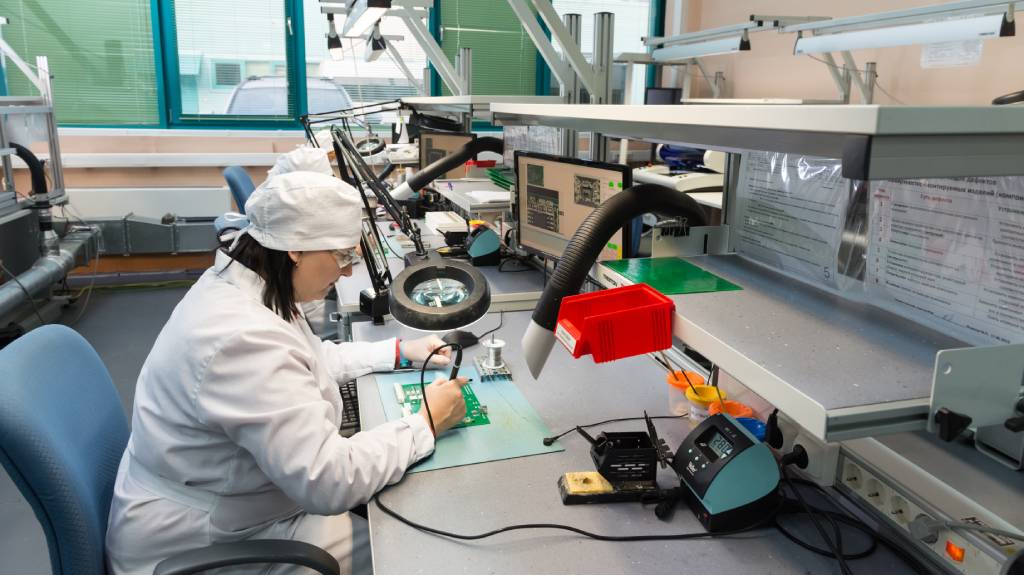Hatch receives a decent amount of inquiries for Custom Android hardware projects through our website and through email (which end up in the same inbox).
The first contact a potential client sends provides a strong indication of whether the client and Hatch would be a good match for each other.
An email that’s concise and well written, where the person takes the time to explain their company background, management team’s background, the purpose of their product, product specs (even if can only provide an estimate), sales/distribution channels, and volume forecast earns instant respect and a speedy response, written with the same amount of care that they took to write their email. Even if the customer doesn’t fit the profile that Hatch is looking for they’ll still get a helpful and polite reply that explains what doesn’t match and suggestions for how they should move forward. On the flip side if a customer composes a high-quality inquiry the potential supplier should respond accordingly. If that doesn’t happen the customer must regard this as a bad sign. This is a two-way street after all.
Recently a potential client sent an email which left a good impression. While the writing shows that English is not the person’s first language (which caused a little confusion), the important thing is that the email shows that the person is thoughtful and cares about the effectiveness of our communication. Below you can see a breakdown of what they wrote so you understand why it was good. I’ll also suggest what they could have done to elicit an even more productive response. Here is the email (with some changes to protect privacy).
Good signs:
- The customer used a company email address, not a generic one like gmail or yahoo. This earns credibility as it shows the customer represents a company, allowing for additional research about the potential client.
- The customer CCed someone else from his company. This shows they take the inquiry seriously and are being held responsible for their work. Note: Not CCing someone doesn’t hurt credibility.
———————————————–
Email starts
Hi there,
I’m N**** C**** from M**** L**** company. Performing a search for suppliers that can sell to us custom Android cell phones or tablets I could find your website. We are working on a device that allows the study of tuning and audience in our country ****. During the last time we had under testing this device, which has an Android cell phone as the main component. The search for a cell phone or custom tablet is due to an update that we want to perform in our project, so below I will make clear what we need to see if you can help us.
- Cell phones / tablets with values less than 100 USD / unit
- Initial amount to order of 2000 units.
- Device must allow (or come with) change of Boot Logo (Splash Screen) and change of Boot animation
- Present (or allow to activate) feature of Auto power on (auto power on when the device is connected to power via micro USB cable).
- Do not present easy access to Sim Card withdrawal
- Lockable buttons so that the user cannot interact with the equipment once in the hands of the consumer
Among the minimum necessary characteristics in the cell phone are the following:
- Screen (Size, Resolution): 6 to 10″ / 540 x 960 pixels
- CPU : Quad-core 1.4 GHz Cortex-A53 or better
- RAM: 1.5 Gb or above
- Flash Memory: 16 Gb or above
- OS : Android 6 or above
- Communication: Wi-Fi 802.11 b/g/n, Bluetooth 4.2, A2DP, LE
- Network: 2G, 3G, 4G (multiregion)
- Double Sim card Slot
- Sensors: GPS
- Ports: MicroUSB, TRRS audio jack 3.5mm
- Battery: 2600 mAh or above
- Power Input: 5V
I’ll look forward for your answer.
Regards,N**** C****
Development Engineer
M**** L**** Inc.
Email ends
———————————————–
You might be surprised by what constitutes ‘good signs’ because some of these points seem so basic, but they’re worth pointing out simply because many emails miss these good points.
- Hi there,
A greeting! That’s right, simply saying ‘Hello/Dear/Hi’ means something. This has nothing to do with technical skills, size of bank account, or anything else related to your Custom Android manufacturing project, it’s just a sign that you’re a polite and thoughtful person, the kind we want to work with.
- I’m N**** C**** from M**** L**** company. Performing a search for suppliers that can sell to us custom Android cell phones or tablets I could find your website.
This short introduction about the person and company is good. The sender would have done even better by providing details about the background of the company such as date of founding, mission of the company, and highlights about the management team in one or two sentences. Those details add credibility and (could) make Hatch more interested in the project. Even if the client’s company is new honesty and transparency are good indications of character.
- We are working on a device that allows the study of tuning and audience in our country ****. During the last time we had under testing this device, which has an Android cell phone as the main component. The search for a cell phone or custom tablet is due to an update that we want to perform in our project, so below I will make clear what we need to see if you can help us.
Explaining a bit about the product helps me judge the potential of the project.
If the product delivers a unique value that equally unique hardware can leverage or you need a long term dependable and consistent supply chain then going custom makes sense for you.
Many inquiries I respond to by telling the person that they should start testing on a generic Android device rather than making a custom Android device when their company is too early stage or their application doesn’t benefit enough to justify the cost and time of making a custom Android product.
Noting in their email that they’ve already done testing with a generic Android cell phone indicates they have experience which leaves a positive impression. Any company wanting to make a custom Android phone or tablet must go through testing their app on a generic device first. This allows the company to test their app for user experience, find bugs in the app, and demo the product to users, investors, and internally. Usually making and modifying software takes less time and money than making and modifying hardware so once the hardware development process starts it’s best that software doesn’t cause any unnecessary delays.
I wasn’t able to understand clearly the purpose of this product, probably due to the language limitations, so this was one of the things I asked for clarification about in my response.
- Cell phones / tablets with values less than 100 USD / unit
- Initial amount to order of 2000 units.
- Device must allow (or come with) change of Boot Logo (Splash Screen) and change of Boot animation
- Present (or allow to activate) feature of Auto power on (auto power on when the device is connected to power via microsUSB cable).
- Do not present easy access to Sim Card withdrawal
- Lockable buttons so that the user cannot interact with the equipment once in the hands of the consumer
Providing information about the customization requirements allows me to verify whether it makes sense for them to partner with Hatch. If there are very simple customization requirements then I’ll tell the client that they’re better off buying from a supplier of commodity tablets, at least in the beginning, since that’s usually cheaper. When Hatch undertakes a new custom Android tablet or phone project we’re able to add real value if there are several unique features required to make the device work properly. On the flip side if the customer has overstated demands about what to expect from Hatch it shows that the customer doesn’t understand what we do or the extent of what they want done.
Mentioning forecast volume and price are key components of a good inquiry as well. In this case the volume is too low to justify doing a custom project on this kind of product (and for this market) and my response lets the client know. Transparent communication allows us to address challenges and opportunities as early as possible, saving everyone’s time.
- Among the minimum necessary characteristics in the cell phone are the following:
- Screen (Size, Resolution): 6 to 10″ / 540 x 960 pixels
- CPU : Quad-core 1.4 GHz Cortex-A53 or better
- RAM: 1.5 Gb or above
- Flash Memory: 16 Gb or above
- OS : Android 6 or above
- Communication: Wi-Fi 802.11 b/g/n, Bluetooth 4.2, A2DP, LE
- Network: 2G, 3G, 4G (multiregion)
- Doble Sim card Slot
- Sensors: GPS
- Ports: MicroUSB, TRRS audio jack 3.5mm
- Battery: 2600 mAh or above
- Power Input: 5V
Providing specs shows that the client has an idea of what they need, although a client may not know what they need and, in that case, Hatch will help confirm specs with the client.
It’s possible that we’ll suggest doing an engineering assessment if there’s a lot of architecture support required or the project has many misaligned expectations. More than showing that the client has competency with the technical requirements, including specs gives Hatch an opportunity to quickly estimate a unit cost (price takes into account order quantity and customization requirements as well). Hatch has a spec sheet template that we send to clients to fill in which covers hardware specs and customization/usability requirements for casing, firmware, and performance. The completed spec template is eventually integrated into a formal project proposal Hatch sends the client.
- I’ll look forward for your answer.
Regards,
N**** C****
Development Engineer
M**** L**** Inc.
Polite closing with signature at the bottom of email demonstrates a professional formality.
In summary including the below bullet points in your initial email will set your relationship with Hatch or any other qualified partner (for custom Android development or any tech hardware project) in the right direction.
- Greeting
- Individual and company introduction, including mission, background, executive profile, and basic funding/financial information.
- Information about the use case and application of the product including how the product is used, by who, in what setting/environment, what purpose the product serves, and any other important detail.
- Information about how far your company has gotten with testing your application using a generic device and whether you’ve had any sales or end user testing.
- Customization requirements
- Volume expectation
- Technical specs
Some companies don’t want to release so much information without and NDA in place and Hatch can accommodate that request.
Digging into the broad and minute details of your product and company help Hatch to become a more productive, integrated and valuable extension of your company.
To see if you’re ready to work with Hatch check out this blog post. It also gives direction to companies that need to do more on their own before engaging Hatch. Getting your high quality inquiries allows us to feel your passion and learn about your projects which bring happiness to our lives. Thank you for sharing your projects and passion with Hatch.






